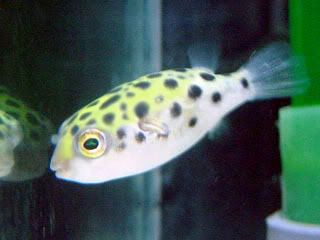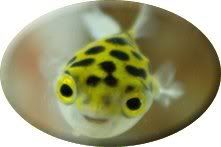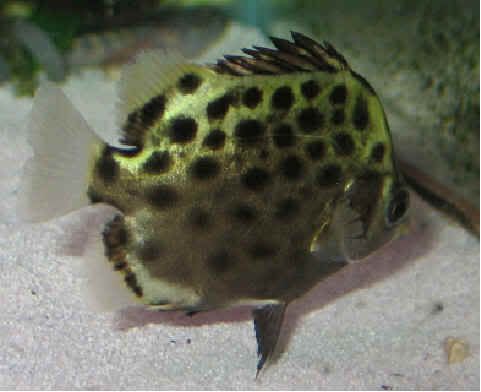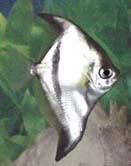
Well, aside from being cute and frisky little creatures, green spotted puffer fish are actually a subject of much research these days. The green spotted pufferfish, Tetraodon nigroviridis, has a genome of 350 megabases, about an 8th the size of the human genome and the smallest genome known of all vertebrates. That’s not to say they have less genes, but rather they have less space between the genes. They have very small introns—the regions of genes which are not used to code proteins. In humans and other vertebrates, the entire gene, introns included, is transcribed into mRNA; then the introns are spliced out by the cell machinery before translation (protein creation) begins. Some introns have unknown functions, but others exist so that alternative splicing—cutting the mRNA in different ways to create different proteins—can take place. Puffer fish not only have fewer and smaller introns, but they also have less DNA in between genes. One example is transposable elements, moveable genetic sequences that may have arisen due to interaction with viruses. These make up 45% of the sequence of the human genome, while green spotted puffers only contain about 3.8% transposable elements in their genomes. Scientists are now asking why puffers did not develop long non-coding regions like most vertebrates, and what sort of cell machinery exists to prevent their coming about. Basically, how do these little guys keep their DNA so tidy?
For more info. on the compact genome of Tetraodon nigroviridis, check out this cool site: http://www.cns.fr/externe/English/Projets/Projet_C/organisme_C.html#ecologie
Sources:
http://www.cns.fr/externe/English/Projets/Projet_C/organisme_C.html#ecologie
Puffer pic:
http://cytokine.medic.kumamoto-u.ac.jp/CFC/CK/Fish/Tetradontiformes.html


 I chose brackish instead of any other because you can find some of the most interesting fish in this type of habitat. My favorite, the green spotted puffer fish (Tetraodon nigroviridis), is very lively and playful. They’re fun to watch because of their brilliant green color and their endless antics—mine does loop-d-loops and is curious about anything new in the tank. They seem to be pretty much always hungry though and will eat anything in a shell, so keeping snails, crabs, or shrimps in the tank is a hopeless venture.
I chose brackish instead of any other because you can find some of the most interesting fish in this type of habitat. My favorite, the green spotted puffer fish (Tetraodon nigroviridis), is very lively and playful. They’re fun to watch because of their brilliant green color and their endless antics—mine does loop-d-loops and is curious about anything new in the tank. They seem to be pretty much always hungry though and will eat anything in a shell, so keeping snails, crabs, or shrimps in the tank is a hopeless venture. Another fish with a big personality is the green spotted scat (Scatphagus argus). Also green with spots and also endlessly hungry, these fish will go crazy for most anything you put in the tank. Their scientific name is Scatphagus, meaning "eater of feces," so it's no surprise that they'll go for about anything edible in the tanks. I like to stick a piece of cucumber slice on a post, so that it half floats in the water. The scat will feed off of it, looking like a boxer with a punching bag, swooping in and out as it bites at the cucumber.
Another fish with a big personality is the green spotted scat (Scatphagus argus). Also green with spots and also endlessly hungry, these fish will go crazy for most anything you put in the tank. Their scientific name is Scatphagus, meaning "eater of feces," so it's no surprise that they'll go for about anything edible in the tanks. I like to stick a piece of cucumber slice on a post, so that it half floats in the water. The scat will feed off of it, looking like a boxer with a punching bag, swooping in and out as it bites at the cucumber.



